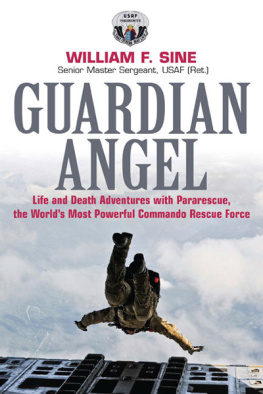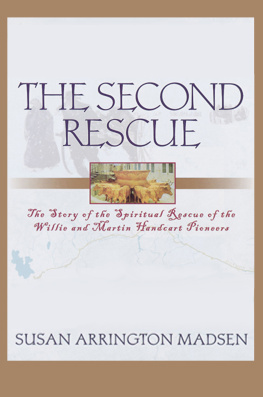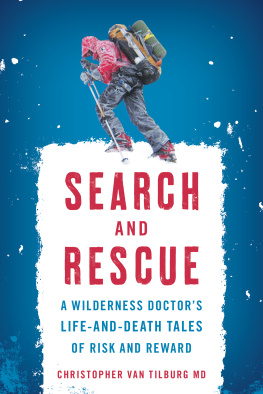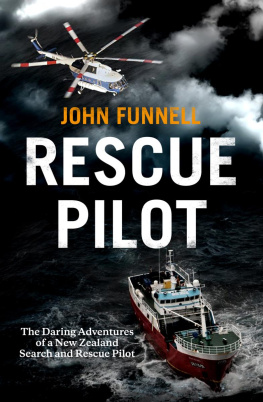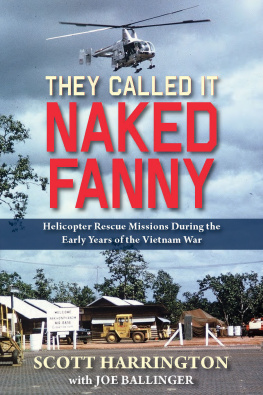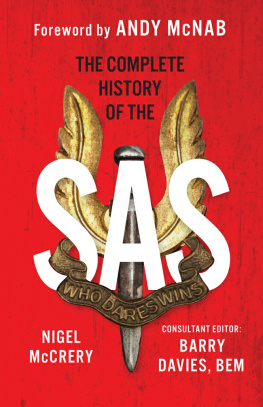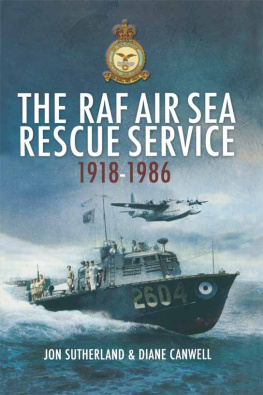GUARDIAN ANGEL
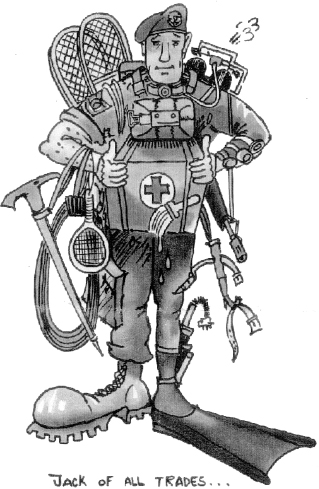
Published in the United States of America and Great Britain in 2012 by
CASEMATE PUBLISHERS
908 Darby Road, Havertown, PA 19083
and
10 Hythe Bridge Street, Oxford, OX12EW
Copyright 2012 William F. Sine
ISBN 9781612001340 (epub)
Cataloging-in-publication data is available from the Library of Congress and the British Library.
All rights reserved. No part of this book may be reproduced or transmitted in any form or by any means, electronic or mechanical including photocopying, recording or by any information storage and retrieval system, without permission from the Publisher in writing.
10 9 8 7 6 5 4 3 2 1
Printed and bound in the United States of America.
For a complete list of Casemate titles please contact:
CASEMATE PUBLISHERS (US)
Telephone (6100) 853-9131, Fax (610) 853-946
E-mail:
CASEMATE PUBLISHERS (UK)
Telephone (01865) 24149, Fax (01865) 794449
E-mail:
Front cover photo: An Alaska Air National Guard pararescueman performs a high-altitude jump from a Coast Guard C-130 Hercules during a training mission above Joint Base Elmendorf-Richardson, Alaska.Airman 1st Class Jack Sanders (USAF), af.mil
Frontispiece: Jack of All Trades by legendary PJ Udo Fischer.
All photos are from authors collection unless otherwise noted.

INTRODUCTION
Angel of God, my guardian dear
To whom His love entrusts me here
Ever this day be at my side
To light and guard, to rule and guide
Amen
traditional Catholic prayer to ones Guardian Angel
THE WORLDS MOST POWERFUL AND ACCOMPLISHED RESCUE FORCE IS U.S. Air Force Pararescue. Military leaders rely on pararescue forces to accomplish the most difficult and dangerous national priority rescue missions such as recovering American jet pilots who are shot down and stranded deep behind enemy lines. Pararescuemen, also known as PJs for pararescue jumpers, are ultra-elite commandos whose training is on par with that of U.S. Navy SEALs, U.S. Army special forces (Green Berets) and rangers, and Marine Corps amphibious reconnaissance. A PJs mission is unique among U.S. unconventional warfare operators. PJs and their Combat Rescue Officers, called CROs and pronounced crow, are masters of all things rescue, but they remain little known outside the close knit and secretive special operations community.
PJs routinely take on harrowing missions that are beyond the capabilities of other rescue organizations. They can operate in the depths of the sea or at the roof of the world. They have braved withering Iraqi machinegun fire to scuba dive in filthy canals, searching for casualties, and have saved hundreds of injured climbers on the treacherous slopes of Mt. McKinley. PJs also provide worldwide humanitarian aid after natural disasters. In the fourteen days immediately following Hurricane Katrina, PJs rescued four thousand victims. Pararescue has always been cutting-edge and has supported Americas space program from the beginning. For decades NASA used PJs to support capsule splashdowns and space shuttle operations. In their humanitarian role, PJs rescue civilians of all nationalities, especially distressed sailors isolated far out at sea. Since USAF Pararescues founding in 1947, PJs have saved almost forty thousand lives. The pararescue motto succinctly explains a PJs willingness to sacrifice all in the performance of his duties: These things we do, that others may live.
The lifesaving mission of pararescue and the selfless sentiment embodied in the PJ motto represents a noble calling that is worthy of a divine benefactor. Many PJs believe this patronage takes the form of a guardian angel who nurtures and protects the pararescue profession and its endeavors. Like many PJs, I believe I have a guardian angel. Looking back on my career and the many close calls I had, I think my angel must be unusually powerful! A Rescue Angel is the centerpiece of the PJ emblem.
In 1966 the air force chief of staff authorized PJs to wear a distinctive maroon beret adorned with a metal badge depicting the PJ emblem. The maroon beret is a tangible symbol that acknowledges the extremely hazardous duties of pararescuemen and pays homage to the blood they shed in the line of duty. Historically, pararescue is only the second specialty in the American armed forces, and the first in the U.S. Air Force, authorized to wear a distinctive beret.
Pararescue is not only the most capable humanitarian rescue organization in existence; its also the worlds most effective combat search and rescue force. To a greater extent than any other country in history, America takes care of its men and women in uniform who serve and sacrifice for their country: its a national core value. American civilians around the world and U.S. military personnel serving overseas know with certainty that their country will go to incredible lengths to rescue them. The Department of Defense places the highest priority and value on personnel recovery (PR) and views it as a military and moral imperative. PR consists of the ability to quickly and accurately report an incident, locate the isolated personnel, support the rescue operation with the full might of our nation, recover the person using combat search and rescue forces, and reintegrate the rescued personnel back into their unit or society and care for their long-term physical and mental wellbeing. The rescue mission is so important that air force leaders decided there should be an elite force exclusively dedicated to PR. The U.S. Air Force calls that force the Guardian Angel Weapon System. Guardian Angel is made up of the trio of pararescuemen, combat rescue officers, and SERE specialists (experts in survival, evasion, resistance, and escape). Guardian Angel is the only Department of Defense asset that provides the full spectrum of personnel recovery services. Air force brass usually reserve weapon system status for war-fighting hardware such as jet aircraft. It is a singular honor for the human components of Guardian AngelPJs, CROs and SEREto be acclaimed as a high-priority weapon system.
Pararescue has a remarkable and storied past. PJs have played a prominent role in every armed conflict since World War II. The pararescue profession can trace its beginnings to 1943 when Lt. Col. Donald Flickinger, a flight surgeon, and two enlisted medics parachuted into the Burmese jungle to rescue twenty-one allied crew and passengers who had bailed-out of their damaged airplane over Japanese-occupied territory. The mission turned into a month-long ordeal in which both survivors and rescuers struggled against man-eating tigers, bloodthirsty leaches, fierce headhunters, and Japanese soldiers. Famous war correspondent and television journalist Eric Sevareid, a was among those stranded in the jungle. He later wrote of Lieutenant Colonel Flickinger and his two medics, Gallant is a precious word. They deserve it. This amazing rescue mission helped inspire the creation of USAF Pararescue in 1947.
Surprisingly, pararescue is little known outside military circles. PJs are combat rescue and recovery specialists second to none. During the Korean War PJs rescued nearly a thousand men from behind enemy lines and helped establish the helicopter as the iconic rescue aircraft. During the Vietnam War PJs were credited with nearly twenty-eight hundred combat saves and were the most decorated enlisted warriors in the air force. PJ heroes earned a Medal of Honor, a dozen Air Force Crosses, one hundred and five Silver Stars, and hundreds of Distinguished Flying Crosses. In 1989 during Operation Just Cause, the invasion of Panama, PJs parachuted onto Rio Hata Airfield and provided exceptional medical coverage for the assault force. PJs were also a powerful presence in Haiti during Operation Uphold Democracy, but most famously PJs fought side by side with U.S. Army rangers in Somalia in 1993 during the Battle of Mogadishu. The fierce fighting and conspicuous gallantry of the American warriors inspired the book and movie

